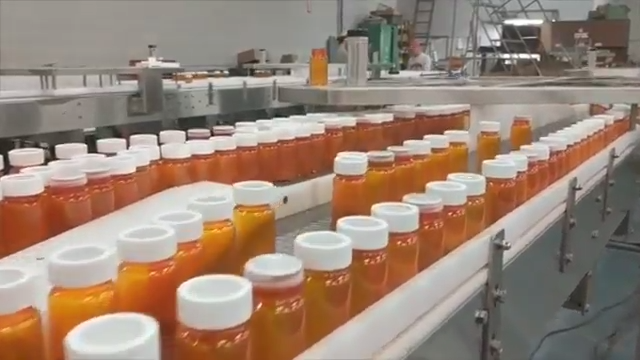If you’re a regular reader of our blog, then you know that we’re big into maximizing throughput by helping food and beverage companies unleash the hidden capacity in their production lines.
The pharma industry is a bit different. Like food and beverage processors, pharma manufacturers also face pressure to reduce processing time and increase output, but they have added complications, such as fragile products (e.g., glass vials) and strict regulations (e.g., rules about storage temperatures for temperature-sensitive products).
The good news is that accumulation can address these issues as well! Let’s take a look at a few ways accumulation helps solve three common problems on pharma production lines.
Eliminating vial damage
One major problem pharma manufacturers face is vial damage. This is becoming much more of a problem as throughputs increase.
For example, an older line running 300 vials per minute won’t see much damage under normal operating conditions. But companies are now pushing to run 500, 600, or even 800 vials per minute. Most accumulation equipment simply can’t run that fast without damaging the vials.
If a single vial breaks on the line, it could represent upwards of $5,000 in immediate product loss. Even worse, the glass may fracture on the line, but not break immediately. Instead, it gets packaged and shipped out to a customer. Later, when a doctor or nurse picks up the vial to insert a needle, it breaks in their hand. The result in this situation is much worse than product loss, especially if the product is toxic.
The trick to eliminating vial damage is eliminating back pressure, which we do using our patented pressureless loop technology.
Our Infinity Rx accumulation table can safely handle vials of all sizes. Check out our case studies:
Speeding up vial drying
Many drugs, like vaccines and serums, are temperature-sensitive. If they spend too long at elevated temperatures, they’ll lose their potency. This effect is permanent and irreversible, and it often results in products having to be destroyed.
Much of the focus in cold chain management is on storage and transportation, but the packaging process is critical as well, because drugs often spend up to 2 days outside of the cold chain during this step.
Here’s a typical scenario:
Glass vials of drugs are stored in refrigerators or freezers. When it’s time to ship the drugs, the vials are removed from the refrigerator or freezer for inspection and labeling.
If you’ve ever taken a cold beverage from a cooler on a hot summer day, you know what happens next: condensation forms on the outside of the vials. This makes visual inspection impossible and prevents a label from adhering to the glass.
In most facilities, the current solution is to move the vials into a conditioning room for 24 to 48 hours until they dry completely. The problem is that spending this amount of time out of the cold chain has an adverse effect on the temperature-sensitive products.
Does this sound familiar? Have you ever had to throw out product because it lost its potency, and 24-48 hours would have made a difference?
What if you could reduce that time down to 15, or even 5, minutes — not only ensuring your products stay cold, but also shaving a day or two off of your shipping time?
Good news: You can!
Our innovative automatic vial drying system combines pressureless loop technology with a high-volume laminar flow accumulator. This system can dry up to 500 vials per minute, and then feed them single-file into a labeler or inspection machine.
Click here to learn more and watch a video of the Garvey Automatic Vial Dryer in action.
Controlling traffic flow — combining, merging, and dividing
Finally, even with plastic bottles, where breakage and condensation aren’t an issue, the flow of bottles through the packaging line can be complex. This is because the lines themselves are complex. For example, a single unscrambler may have to feed 14 separate labelers on demand.
Accumulation can help keep the bottles running through the system in a constant, seamless flow, even if a bottle falls over or a labeler goes down. In our experience, the right accumulation system can double the performance of an existing line simply by eliminating traffic challenges related to combining, merging, and dividing.
Learn more in our case studies:
- Plastic pharmaceutical bottles
- Round plastic prescription bottles
- Prescription bottle distribution system
Pharmaceutical manufacturers face pressure to produce the highest-quality products in the shortest possible time. Assuming this trend continues, solving all three of these issues will become even more essential in the future.
Click here to learn more about our pharmaceutical solutions.




